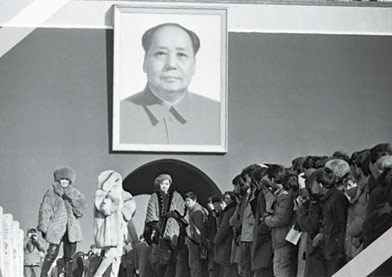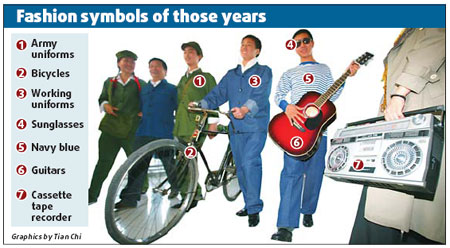| |
How we dressed
The Chinese word for "fashion" was in limbo 30 years ago, but the idea was being awakened - or reawakened. Young men liked the kind of trousers John Travolta wore in Saturday Night Fever even though nobody had heard of the movie.

Bell-bottomed pants became a badge of youthful rebellion. The urge to break free of the tyrannical color scheme of blue, black and gray was palpable. Yet, like many other things, fashion liberation was achieved in fits and starts. In some cities, fashion police, armed with scissors, went on the street and cut the bell-bottoms off people's pants.
Before China's opening up and reform, Dacron and fake collars were the hallmarks of sartorial savoir-faire among the urban Chinese. Because cotton was dclass, the wrinkle-resistant polyester became the preferred fabric of a whole generation. Most people, even urbanites, could only buy new clothing once a year, usually before Chinese New Year. And like all basic commodities, fabric was rationed, which means, even if you had money you could buy only a limited amount.
That gave rise to fake collars. Presumably in fashion-conscious Shanghai, where people could not stand to wear the same clothes weeks at a time, some genius invented a "fake collar". This was a misnomer because the collar was the only part of the shirt that was real. The rest of the shirt was non-existent. Since people wore it in winter, with a sweater over it, they could give the impression of more wardrobe changes without stealing their neighbors' ration coupons.

The collar went out of existence as soon as we crossed the threshold into material sufficiency. It's now become a collector's item. People born in the age of abundance can't imagine an invention like that, let alone as a "fashion item".
|
|
